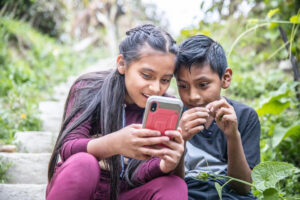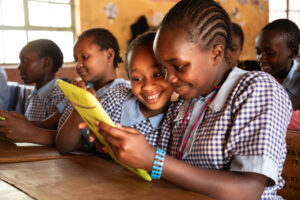Make the digital safety and wellbeing of children a global investment priority.
Every day, millions of children experience digital harms that threaten their safety, mental health, and futures. A child can be locked into a high-risk online interaction in less than 45 minutes and coerced in as little as 19 seconds. One in three children have been asked for sexual images by someone they met online. Reports of AI-generated child sexual abuse material have surged by 1,300% in just one year.
These are not isolated incidents; they are evidence of a systemic failure to protect children in a rapidly expanding digital world. What was once unimaginable has become normalised and if we don’t intervene now, it will only get worse. While technology reshapes economies and societies, children’s safety has been left behind. Across every platform – from gaming spaces to social media to AI-powered tools – children face exploitation, manipulation, and violence that no child should ever encounter.
The human and economic cost
The impact of this crisis is both moral and economic. Violence against children is estimated to cost USD $7 trillion annually, which amounts to around 8 percent of global GDP, enough wealth to make it the world’s third-richest nation. In some countries, these costs exceed national health expenditures several times over.
Every second counts: ten new cases of technology-facilitated sexual abuse are reported every second globally – where digital tools are used to find, harass, control, or exploit victims. Yet, in 13 countries studied as part of Disrupting Harm, only three percent of victims reach out to formal services for help. Behind these numbers are children whose trust, dignity, and safety have been stolen in spaces meant for learning and connection.
The digital transformation has outpaced protection
G20 discussions on digital transformation focus on creating inclusive growth through digital technologies while mitigating risks to mental and physical health. Key areas include ensuring universal connectivity, promoting ethical AI and data governance, and using digital solutions to improve health access and efficiency. This involves addressing the “digital determinants of health,” promoting digital skills, and bridging digital divides to prevent new inequalities from emerging. Governments and industries are investing billions in digital transformation, artificial intelligence, and infrastructure. But while innovation accelerates, the systems meant to safeguard children remain fragmented and underfunded.
There is growing public concern about the digital environment: social media’s link to youth mental health crises, exploitative algorithms, the spread of deepfakes and AI-generated abuse, and unsafe digital toys and chatbots marketed to young users. Parents are sounding the alarm. Survivor advocates are speaking out. Young people themselves are demanding accountability. And some governments around the world are starting to take action. Yet global investment and coordination still lag far behind the scale of risks. Without urgent action, the gap between technological progress and child safety and wellbeing will only widen.





